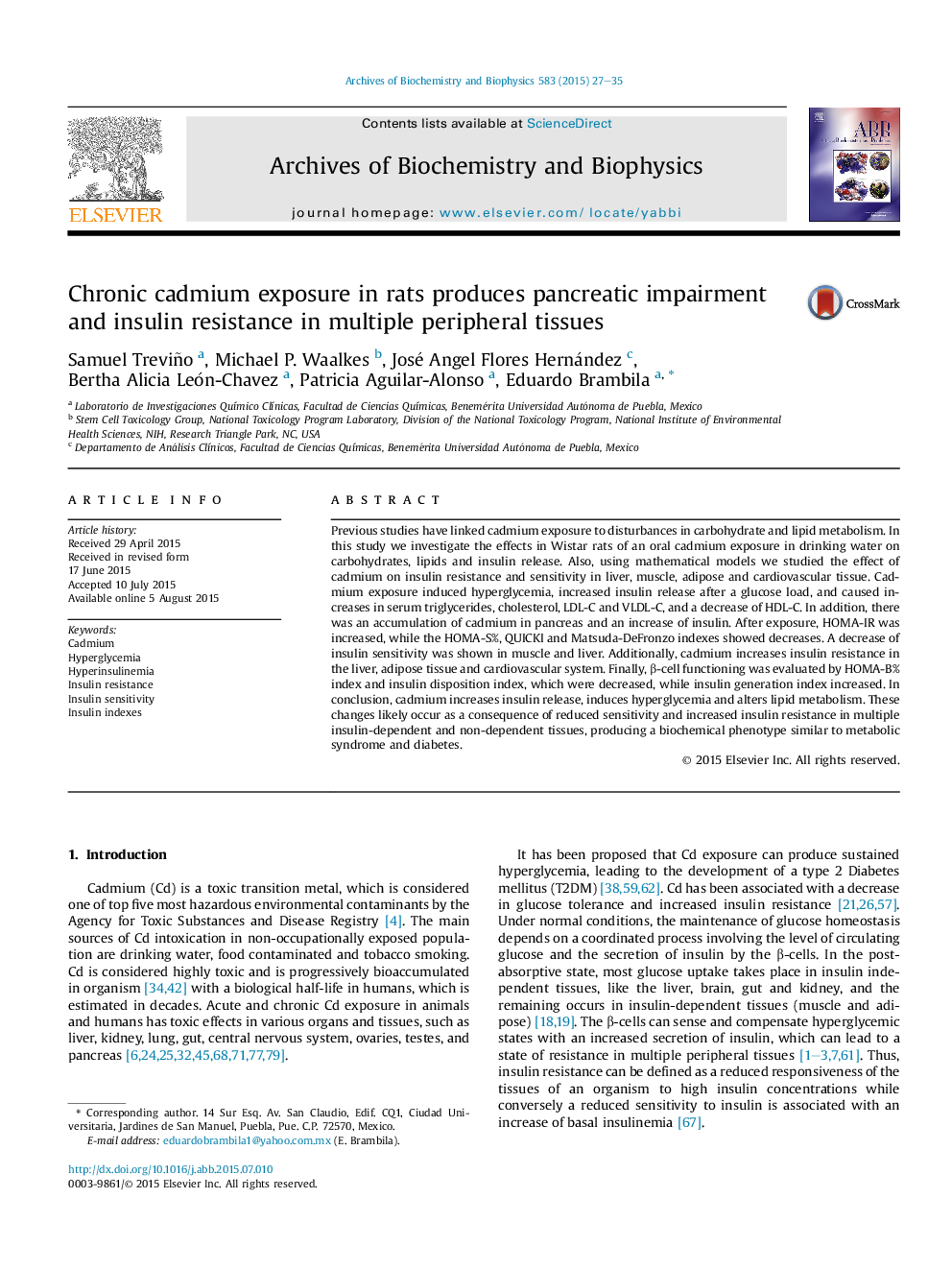| Article ID | Journal | Published Year | Pages | File Type |
|---|---|---|---|---|
| 1924967 | Archives of Biochemistry and Biophysics | 2015 | 9 Pages |
•Mathematical models characterize insulin resistance/sensitivity after Cd-exposure.•Cadmium exposure produces changes in carbohydrate and lipid metabolism.•Cadmium in rats develops a metabolic syndrome similar to showed in humans.
Previous studies have linked cadmium exposure to disturbances in carbohydrate and lipid metabolism. In this study we investigate the effects in Wistar rats of an oral cadmium exposure in drinking water on carbohydrates, lipids and insulin release. Also, using mathematical models we studied the effect of cadmium on insulin resistance and sensitivity in liver, muscle, adipose and cardiovascular tissue. Cadmium exposure induced hyperglycemia, increased insulin release after a glucose load, and caused increases in serum triglycerides, cholesterol, LDL-C and VLDL-C, and a decrease of HDL-C. In addition, there was an accumulation of cadmium in pancreas and an increase of insulin. After exposure, HOMA-IR was increased, while the HOMA-S%, QUICKI and Matsuda-DeFronzo indexes showed decreases. A decrease of insulin sensitivity was shown in muscle and liver. Additionally, cadmium increases insulin resistance in the liver, adipose tissue and cardiovascular system. Finally, β-cell functioning was evaluated by HOMA-B% index and insulin disposition index, which were decreased, while insulin generation index increased. In conclusion, cadmium increases insulin release, induces hyperglycemia and alters lipid metabolism. These changes likely occur as a consequence of reduced sensitivity and increased insulin resistance in multiple insulin-dependent and non-dependent tissues, producing a biochemical phenotype similar to metabolic syndrome and diabetes.
